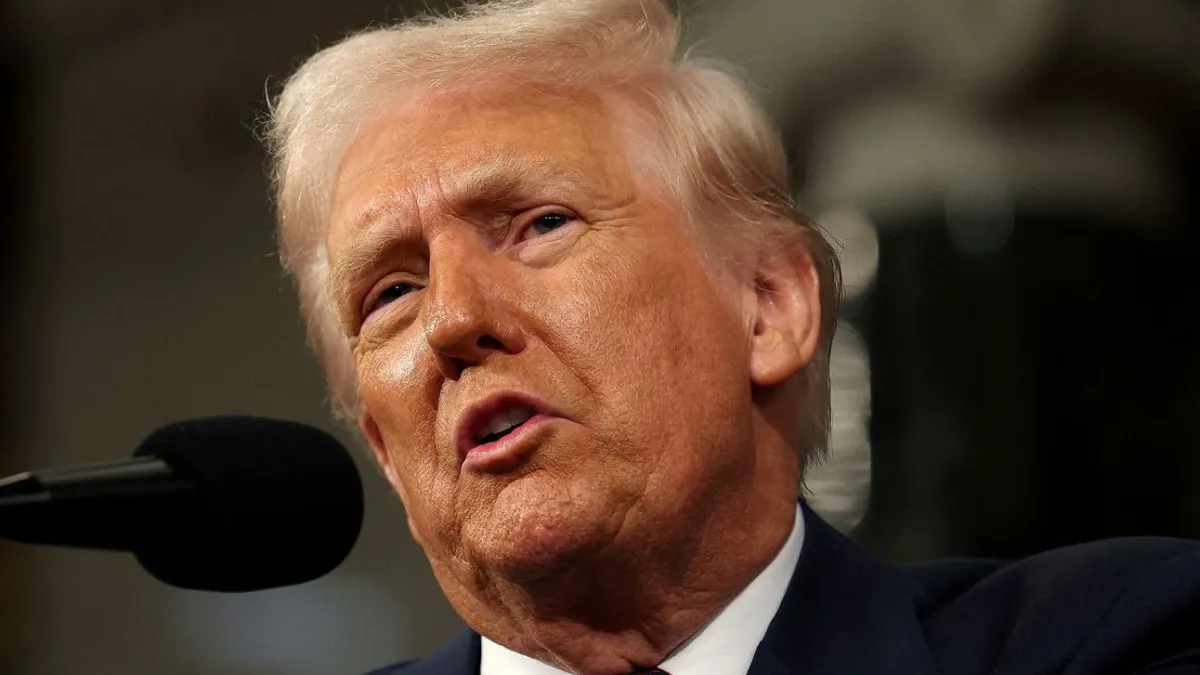
1. The state of our union is…ugly. This wasn’t officially a State of the Union address, but it certainly demonstrated the state of our politics. Trump’s remarks were highly partisan, combative and divisive — a campaign-style speech delivered from the House rostrum, and an extremely long one at that, about 100 minutes. Trump trolled, mocked and attacked Democrats, referring often to former President Joe Biden. He also touted his “swift and unrelenting action” and “astronomical” achievements since returning to office and vowed that he’ll continue to “fight, fight, fight” for his agenda. “We have accomplished more in 43 days than most administrations accomplish in four years or eight years — and we are just getting started,” he said.
Some Democrats jeered Trump despite being urged by their leaders to restrain themselves, and party members came away from the evening questioning their own strategy. That’s a decent summation of our current politics, and the vitriol on display throughout the speech was a sign of how these events have changed in recent years — and how our political discourse has evolved, or devolved.
2. The economy wasn’t Trump’s top topic. Trump led with praise for his presidency, attacks on Democrats and culture war topics, declaring “our country will be woke no longer.” When he did turn to the economy, Trump blamed Biden for the high price of eggs and claimed that he had inherited “an economic catastrophe and an inflation nightmare,” contrary to data showing low unemployment, healthy GDP growth. Trump said his fight against inflation would center on his plans to reduce energy costs and save taxpayer dollars via the new Department of Government Efficiency or DOGE. The president claimed without evidence that DOGE has “found hundreds of billions of dollars” in fraud, a much higher figure than the estimated $105 billion in savings DOGE claims on its own website — and that number can’t be corroborated either.
Of note, Trump also said that DOGE is headed by Elon Musk, contradicting his own administration.
3. Trump acknowledged his tariffs may cause some pain. Trump defended his tariffs and claimed his policies, including additional tariffs to start on April 2, would help American farmers, but said that farmers may have to “bear with” him as they had done before. (“During the US-China trade tension of 2018, the US Department of Agriculture estimated total loss to US farmers at $27 billion,” S&P Global noted recently. “The Trump administration paid $23.1 billion in farm assistance to placate its seething farming community.”)
Trump insisted that tariffs would make America rich but might involve some discomfort first. “There will be a little disturbance, but we are OK with that,” he said. “It won’t be much.”
4. Trump said he wants to cut taxes — and balance the budget. He asked Congress for more funding for his immigration crackdown and deportation efforts and pressed lawmakers to make permanent his 2017 tax cuts and pass additional tax cuts, including his proposals to eliminate taxes on tips, overtime wages and Social Security benefits. Amid Trump’s plugging of his executive actions, his comments on these topics provided a reminder that he still needs Congress to enact and fund substantial portions of his agenda.
5. Trump’s claims about Social Security fraud were not true. He claimed the Social Security rolls include millions and millions of people older than 130 and that many of those people fraudulently continue to receive benefits. But as Trump’s own acting Social Security commissioner said last month, the majority of the people the president was talking about do not have dates of death in Social Security’s records and are not necessarily getting benefits. “Public data from the Social Security Administration shows that about 89,000 people age 99 or over were receiving Social Security benefits in December 2024, not even close to the millions Trump invoked,” CNN reports in a fact check.
6. And he continues to make false claims about aid to Ukraine. Trump keeps saying that the United States has sent some $350 billion to Ukraine while Europe has sent $100 billion. “Those are both imaginary figures,” CNN fact checker Daniel Dale said. See more details about U.S and European aid to Ukraine here or here.